Chapter: Mechanical : Heat and Mass Transfer : Radiation
Solar Radiation
Solar Radiation
The magnitude of the energy leaving the Sun varies with time and is closely associated with such factors as solar flares and sunspots. Nevertheless, we often choose to work with an average value. The energy leaving the sun is emitted outward in all directions so that at any particular distance from the Sun we may imagine the energy being dispersed over an imaginary spherical area. Because this area increases with the distance squared, the solar flux also decreases with the distance squared. At the average distance between Earth and Sun this heat flux is 1353 W/m2, so that the average heat flux on any object in Earth orbit is found as:

Where Sc = Solar Constant, 1353 W/m2
f = correction factor for eccentricity in Earth Orbit, (0.97<f<1.03)
╬Ş = Angle of surface from normal to Sun.
Because of reflection and absorption in the reduced at ground level. Nevertheless, this value gives us some opportunity to estimate the
potential for using solar energy, such as in photovoltaic cells.
Some Definitions
In the previous section we introduced the Stefan-Boltzman Equation to describe radiation from an ideal surface.

This equation provides a method of determining the total energy leaving a surface, but gives no indication of the direction in which it travels. As we continue our study, we will want to be able to calculate how heat is distributed among various objects.
For this purpose, we will introduce the radiation intensity, I, defined as the energy emitted per unit area, per unit time, per unit solid angle. Before writing an equation for this new property, we will need to define some of the terms we will be using.
Angles and Arc Length
We are well accustomed to thinking of an angle as a two dimensional object. It may be used to find an arc length:
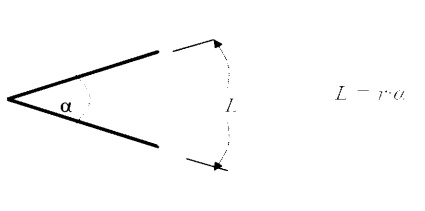
Solid Angle
We generalize the idea of an angle and an arc length to three dimensions and define a solid
angle, ╬ę, which like the standard angle has n the radius squared will have dimensions of length squared, or area, and will have the magnitude of the encompassed area.
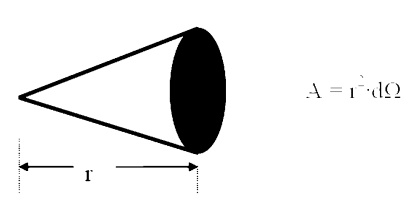
Projected Area
The area, dA1, as seen from the prospective o to the surface, will appear somewhattermed thesmaller projected area.
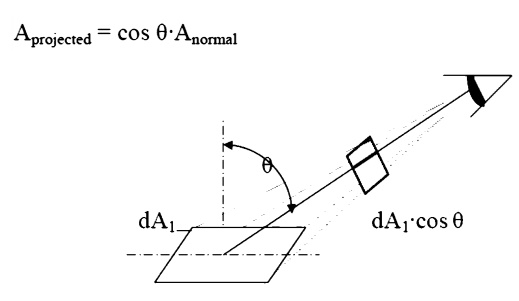
Intensity
The ideal intensity, Ib, may now be defined as the energy emitted from an ideal body, per unit projected area, per unit time, per unit solid angle.

Spherical Geometry
Since any surface will emit radiation outward in all directions above the surface, the spherical coordinate system provides a convenient tool for analysis. The three basic coordinates shown are
R, ¤ć, and ╬Ş, representing the radial, azimuth
In general dA1 will correspond to the emitting surface or the source. The surface dA2 will correspond to the receiving surface or the target. Note that the area proscribed on the hemisphere, dA2 , may be written as:
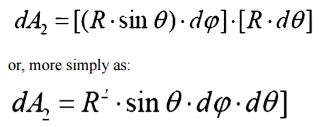
Recalling the definition of the solid angle,
dA = R2┬Ěd╬ę
we find that:
d╬ę =sin2R ╬Ş┬Ěd╬Ş┬Ěd¤ć
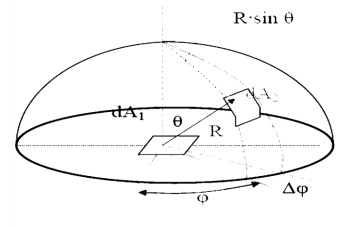
Real Surfaces
Thus far we have spoken of ideal surfaces, i.e. those that emit energy according to the Stefan-Boltzman law:

Real surfaces have emissive powers, E, which are somewhat less than that obtained theoretically
by Boltzman. To account for this reduction, w

so that the emissive power from any real surface is given by:

Receiving Properties
Targets receive radiation in one of three ways; they absorption, reflection or transmission. To account for these characteristics, we introduce three additional properties:
ÔÇó Absorptivity, ╬▒, the fraction of incident r
ÔÇó Reflectivity, ¤ü, the fraction of incident r
Transmissivity,onofincident radiation¤ä, thetransmittedfracti.
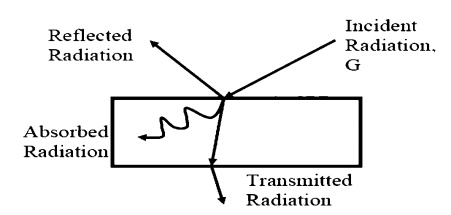
We see, from Conservation of Energy, that:
╬▒ + ¤ü + ¤ä = 1
In this course, we will deal with only opaque
╬▒ + ¤ü = 1 Opaque Surfaces
Related Topics